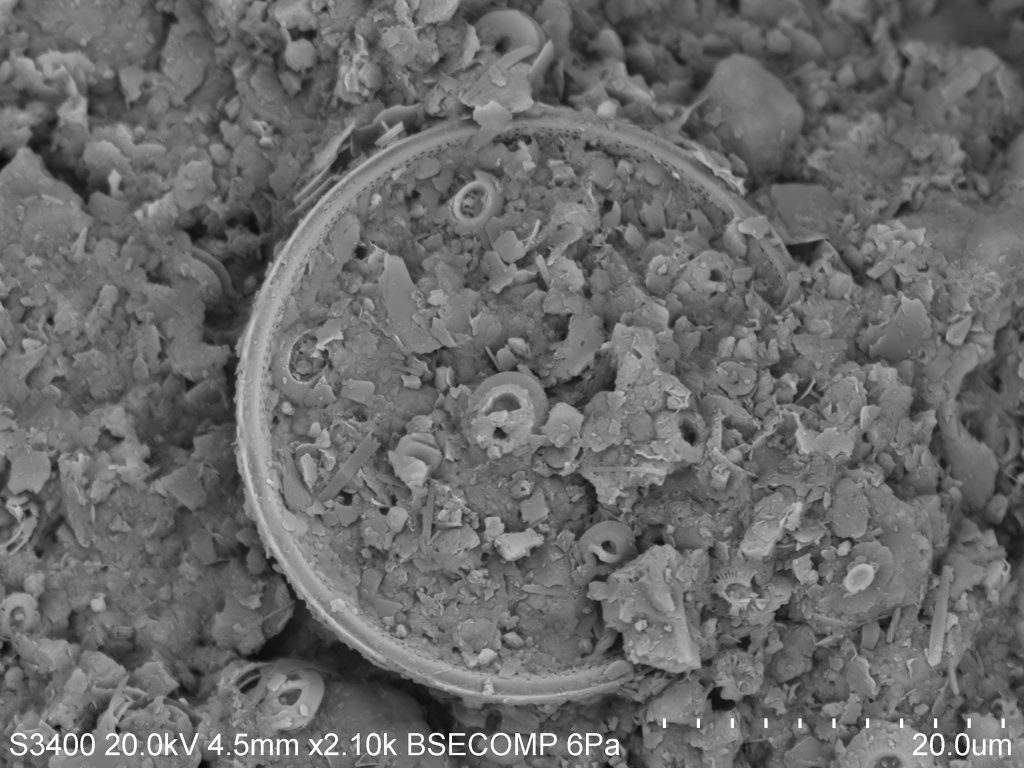Biogenic sediments extracted from deep-sea sediment cores enable scientists to piece together a story about Earth’s early marine environments and past climate. This particular sample was collected off the coast of Papua New Guinea in the western Pacific Ocean by the International Ocean Discovery Program’s expedition RR1313. Microfossil-rich sediments, such as the one pictured above is termed a biogenic ooze and is characterized by containing greater than 30 percent skeletal debris.
The disk-shaped organism featured above is a well-preserved concentric diatom surrounded by a type of phytoplankton, known as a coccolithophore. In terms of shape and size, coccolithophores are a highly diverse group of phytoplankton that produce calcareous skeletons composed of calcium carbonate (CaCO3) called coccoliths. Whereas diatoms are encased by a hard-shelled silica (SiO2) body, often referred to as opal. The siliceous shells of diatoms allow them to endure turbulent mixing in the upper layers of the ocean. As diatoms bloom and die, they sink to the bottom of the ocean and become exceptionally useful in paleoceanographic research. Microfossils are used to infer rates of sedimentation, biological productivity, nutrient availability and oxygenation events which are imperative to understanding past, present, and future climate.


